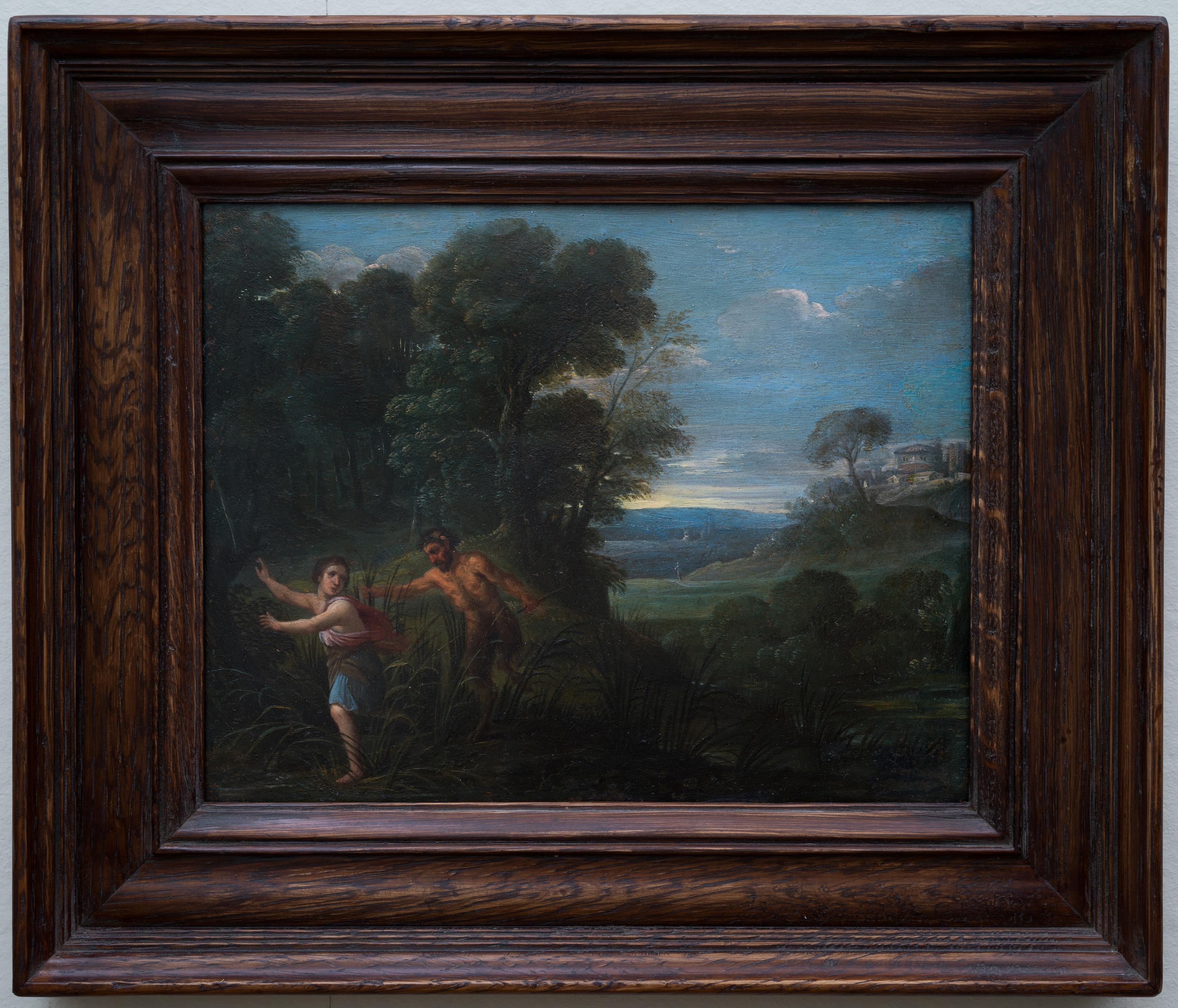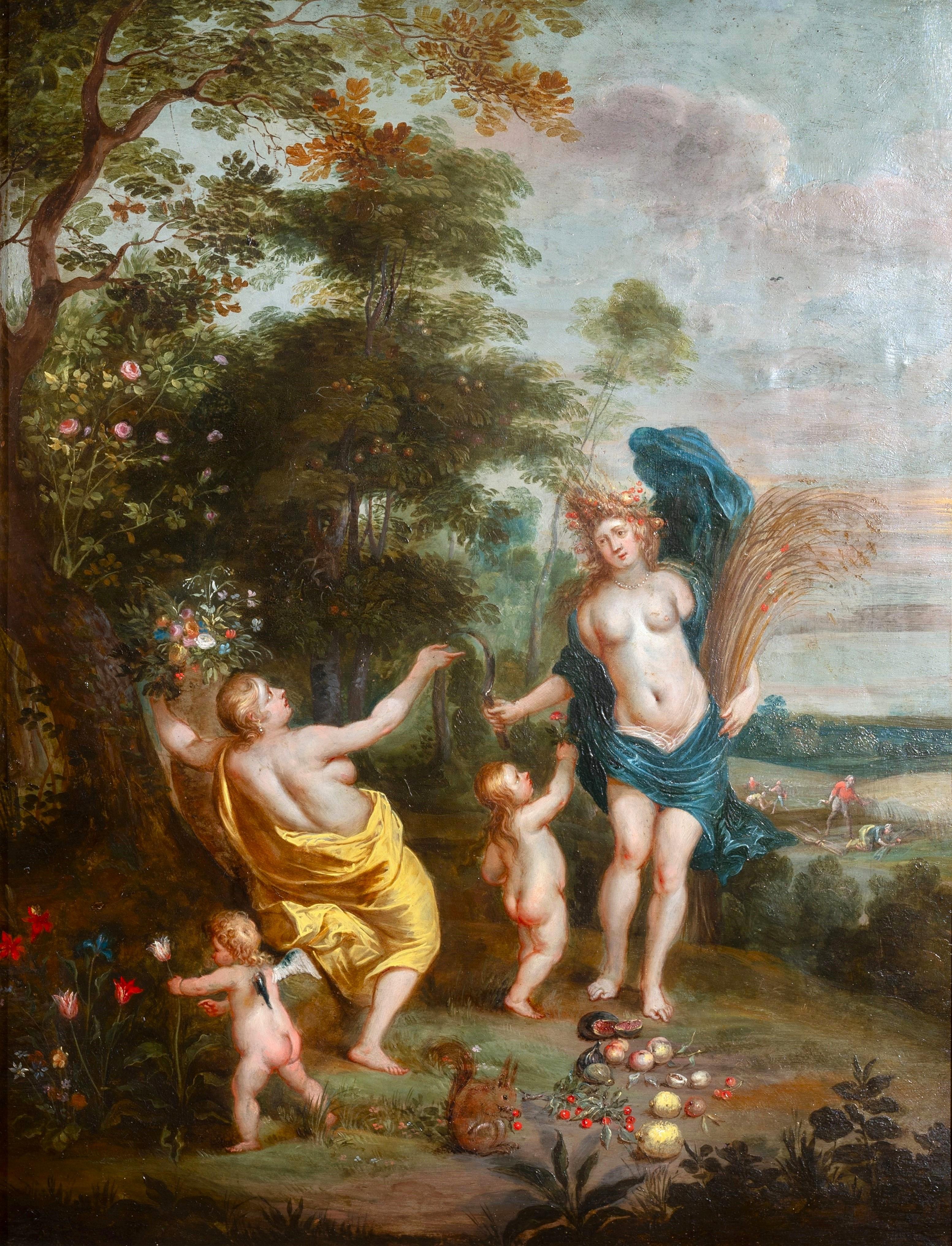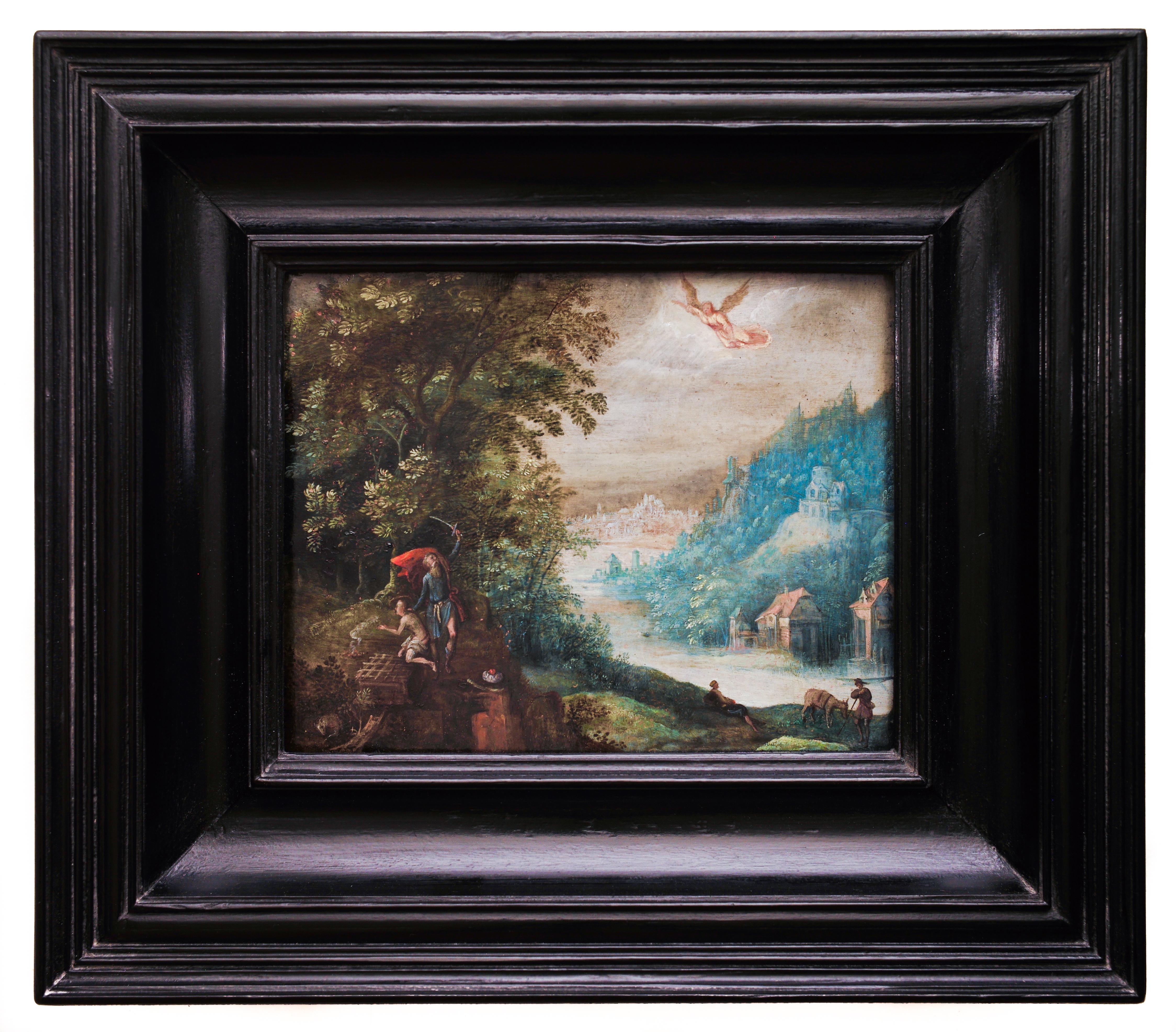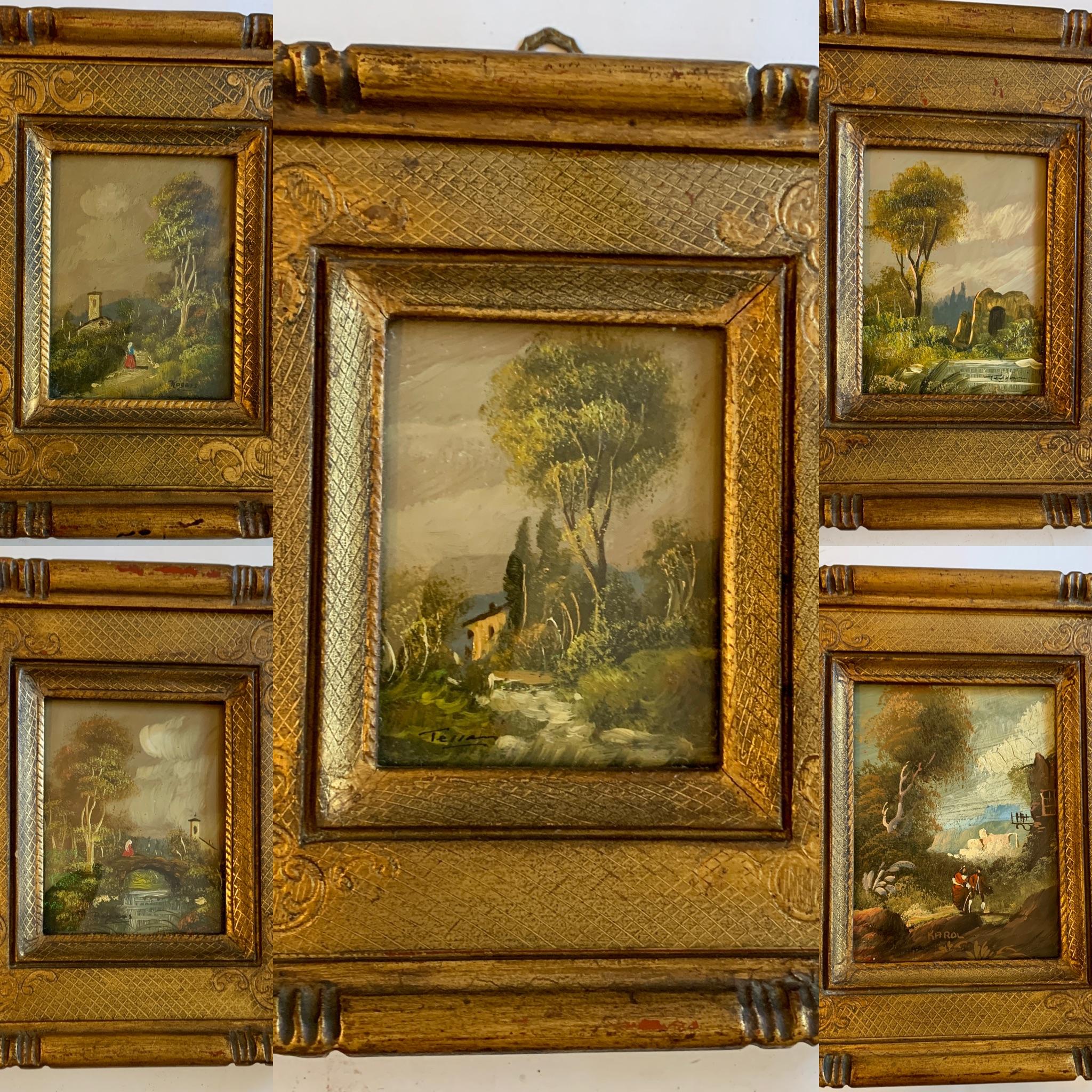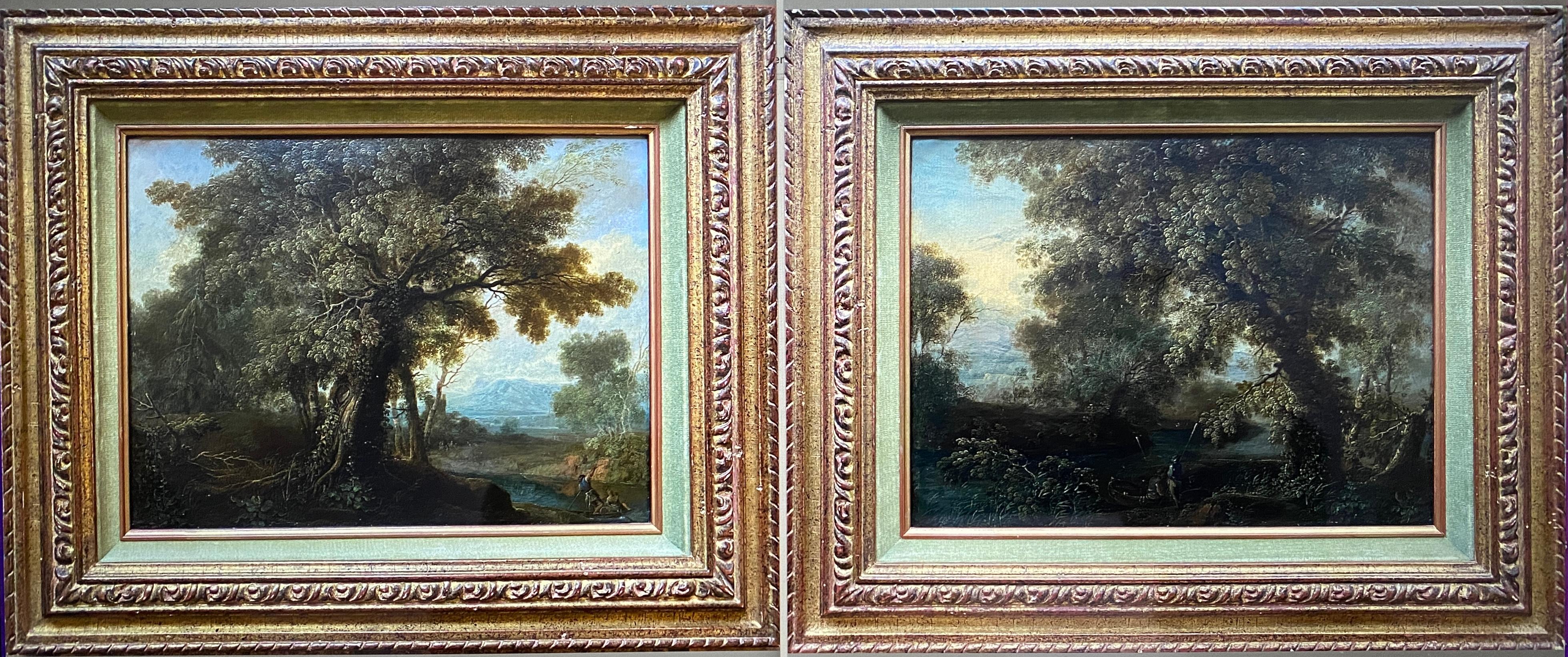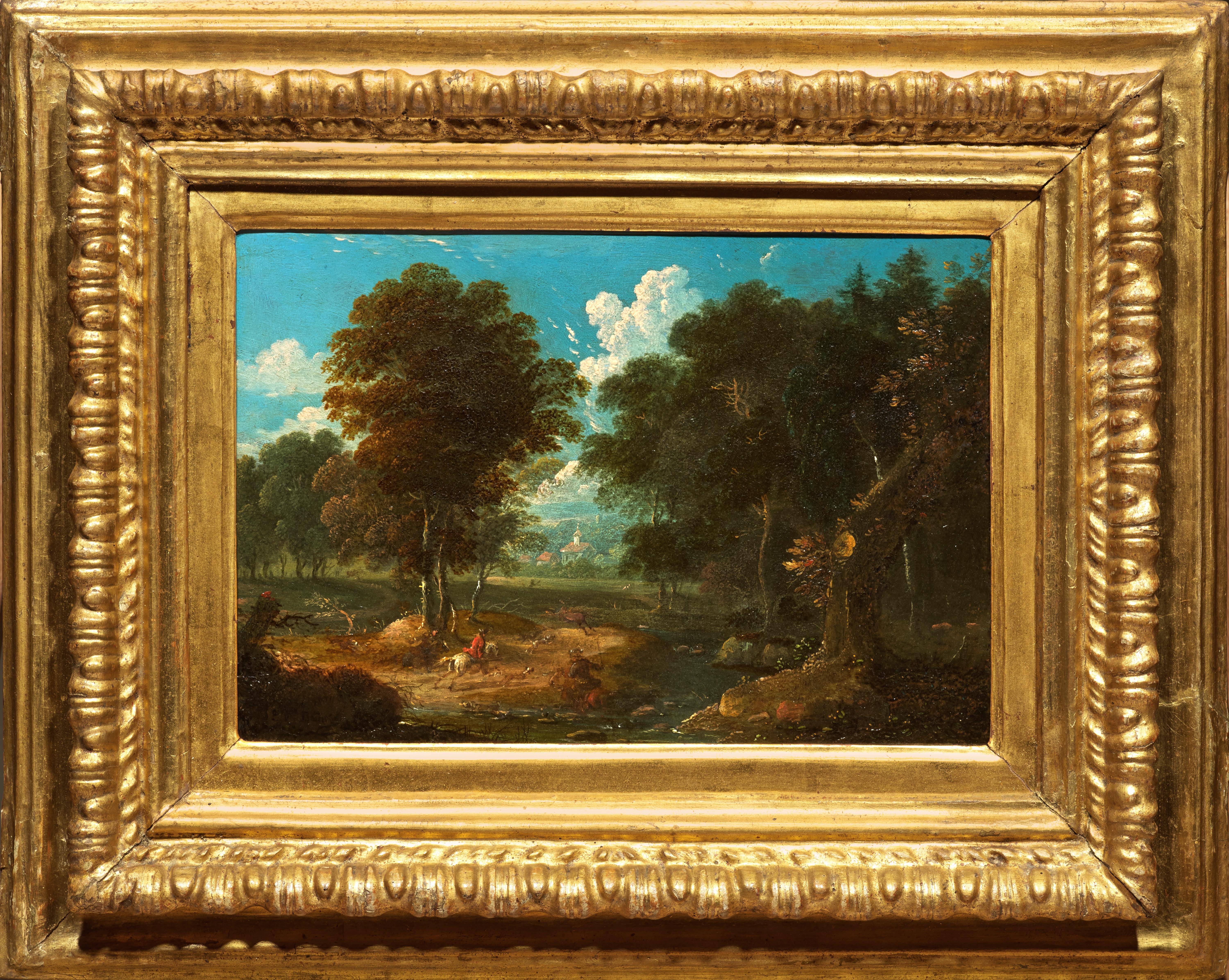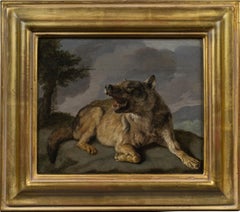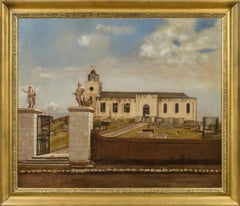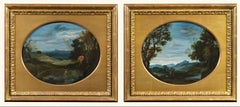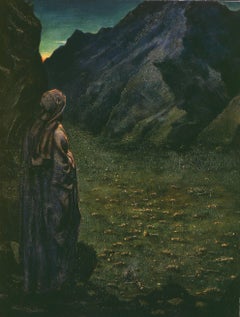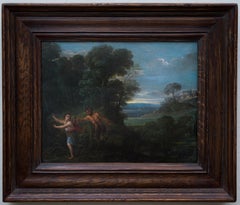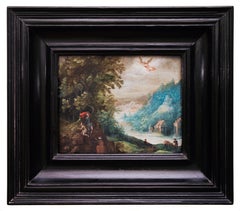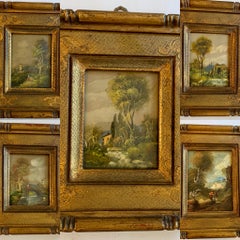Items Similar to Allegory of Abundance
Want more images or videos?
Request additional images or videos from the seller
1 of 4
Jan Brueghel the YoungerAllegory of Abundancec. 1630
c. 1630
About the Item
Painted in collaboration with Hendrick van Balen (Antwerp, 1575 – 1632).
Provenance: Private Collection, Uruguay, since the 1930s.
The eldest son of Jan Breughel the Elder, Jan the Younger trained with his father in Antwerp before setting off for Italy with his childhood friend Anthony van Dyck around 1620. He returned in 1625, becoming a member of the Antwerp painter’s guild (he would become Dean in 1630) and taking over his recently deceased father’s active and successful studio. While he remained active in his native city throughout his long career, his clients came from across Europe and included the Austrian and French courts. The subject matter of his paintings was varied, although he is best known for his idealized landscapes which might feature villages, as well as his allegories and mythological scenes, often made in collaboration with the specialists in figure painting, such as in the present example. Brueghel’s landscape—characterized by a meticulous handling of receding space and populated with beautifully-observed animals, fruits, flowers, and other natural elements—here serves as the setting for a meeting of gods and goddesses accompanied by a satyr, nymphs, and winged putti.
This work is a newly discovered and version of a composition treated on at least two other occasions by Brueghel. The best known is that in National Gallery in Prague with figures by Hendrick van Balen (Fig. 1), while another panel of similar dimensions with figures by Ambrosius Francken the Younger is in a private collection in New York (Fig. 2). Our painting is slightly larger than those two and is distinguished both by its copper support and more expansive treatment of the trees and sky across the top of the painting. As is typical of Jan Brueghel the Younger’s collaborative efforts, van Balen was responsible for the principal figures, while Brueghel painted the landscape, still-life elements, and staffage.
The subject of the work has been variously titled throughout the scholarly literature. For Gustav Glück it was an Allegory of Autumn; Klaus Ertz termed it an Allegory of Abundance; and Bettina Werche catalogued it as Bacchus, Venus, and Ceres. It may properly be considered all three. The harvest deities of Bacchus and Ceres flank the goddess of love Venus and well-illustrate the motto Sine Cerere et Baccho friget Venus (“Without Bacchus and Ceres, Venus grows cold”)—a quotation from the Roman dramatist Terence, suggesting that love disappears without the stimulus of wine and food. As Bacchus, the wine god, and Ceres, the goddess of agriculture, are associated with the bounty of the autumn harvest, their presence—in the context of the richness of the vegetation, produce, fruits, and flowers depicted—make the painting both an allegory of the season, and, more broadly, one of Abundance.
Brueghel was a master of creating a microcosm of the world—here encompassing both the earthly and the godly—in the limited space of a cabinet picture. The composition is created from two divergent diagonals that begin in the center foreground and receipt to the outer edges of the painting, pointing towards two distant landscape views punctuated by a pink and blue tinged sky. The mass of dense trees executed in earthy brown and green hues in the center of the middle-ground serves as a backdrop to the figures in the foregrounds and offsets the rich colors of their garments. These sophisticated compositional devises serve to create an attractive image that presents engaging passages of visual interest throughout.
Dr. Klaus Ertz has confirmed Jan Brueghel the Younger authorship of the painting, with figures by Hendrick van Balen, upon firsthand inspection (certificate of 7 April 2022). Ertz dates the work ca. 1630, shortly after Breughel’s return from Italy in 1625.
- Creator:Jan Brueghel the Younger (1601 - 1678, Flemish)
- Creation Year:c. 1630
- Dimensions:Height: 29.88 in (75.9 cm)Width: 41.25 in (104.78 cm)
- Medium:
- Movement & Style:
- Period:
- Condition:
- Gallery Location:New York, NY
- Reference Number:1stDibs: LU10210793482
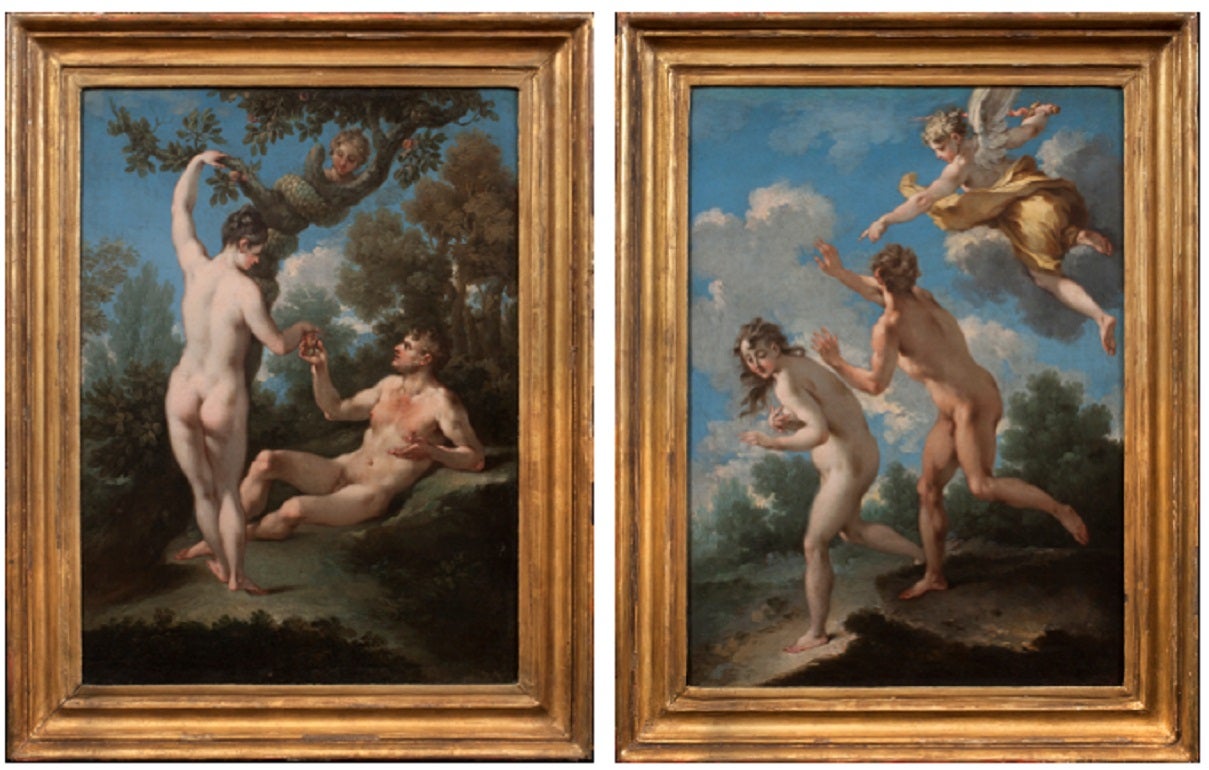
About the Seller
5.0
Recognized Seller
These prestigious sellers are industry leaders and represent the highest echelon for item quality and design.
Established in 1997
1stDibs seller since 2012
20 sales on 1stDibs
Typical response time: 16 hours
- ShippingRetrieving quote...Shipping from: New York, NY
- Return Policy
Authenticity Guarantee
In the unlikely event there’s an issue with an item’s authenticity, contact us within 1 year for a full refund. DetailsMoney-Back Guarantee
If your item is not as described, is damaged in transit, or does not arrive, contact us within 7 days for a full refund. Details24-Hour Cancellation
You have a 24-hour grace period in which to reconsider your purchase, with no questions asked.Vetted Professional Sellers
Our world-class sellers must adhere to strict standards for service and quality, maintaining the integrity of our listings.Price-Match Guarantee
If you find that a seller listed the same item for a lower price elsewhere, we’ll match it.Trusted Global Delivery
Our best-in-class carrier network provides specialized shipping options worldwide, including custom delivery.More From This Seller
View AllA Wolf
Located in New York, NY
Provenance:
The Marchesi Strozzi, Palazzo Strozzi, Florence
Sale, Christie’s, London, May 20, 1993, lot 315, as by Carl Borromaus Andreas Ruthart...
Category
17th Century Old Masters Animal Paintings
Materials
Canvas, Paper, Oil
View of St. John’s Cathedral, Antigua
Located in New York, NY
Provenance:
Robert Hollberton, Antigua, ca. 1841
Private Collection, New York
The present painting depicts Old St. John’s Cathedral on the island of Antigua. The church was erected in the 1720s on the designs of the architect Robert Cullen. It measured 130 feet by 50 feet with north and south porches 23 x 20 ½ feet. The tower, 50 feet high with its cupola, was added in 1789. The church was elevated to the status of a cathedral, but disaster struck in the form of an earthquake that destroyed the building on 8 February 1843. A memorandum of that date relates the event:
“On Wednesday, 8th February, 1843, this island was visited by a most terrific and destructive earthquake. At twenty minutes before eleven o’clock in the forenoon, while the bell was ringing for prayers, and the venerable Robert Holberton was in the vestry-room, awaiting the arrival of persons to have their marriage solemnized, before the commencement of the morning service, the whole edifice, from one end to the other, was suddenly and violently agitated. Every one within the church, after the first shock, was compelled to escape for his life. The tower was rent from the top to the bottom; the north dial of the clock precipitated to the ground with a dreadful crash; the east parapet wall of the tower thrown upon the roof of the church; almost the whole of the north-west wall by the north gallery fell out in a mass; the north-east wall was protruded beyond the perpendicular; the altar-piece, the public monument erected to the memory of lord Lavington, and the private monuments, hearing the names of Kelsick, Warner, Otley, and Atkinson, fell down piecemeal inside; a large portion of the top of the east wall fell, and the whole of the south-east wall was precipitated into the churchyard, carrying along with it two of the cast-iron windows, while the other six remained projecting from the walls in which they had been originally inserted; a large pile of heavy cut stones and masses of brick fell down at the south and at the north doors; seven of the large frontpipes of the organ were thrown out by the violence of the shock, and many of the metal and wooden pipes within displaced; the massive basin of the font was tossed from the pedestal on which it rested, and pitched upon the pavement beneath uninjured. Thus, within the space of three minutes, this church was reduced to a pile of crumbling ruins; the walls that were left standing being rent in every part, the main roof only remaining sound, being supported by the hard wood pillars.”
The entrance from the southern side into the cathedral, which was erected in 1789, included two imposing statues, one of Saint John the Divine and the other of Saint John the Baptist in flowing robes. It is said that these statues were confiscated by the British Navy from the French ship HMS Temple in Martinique waters in 1756 during the Seven Years’ War and moved to the church. The statues are still in situ and can be seen today, much as they appeared in Bisbee’s painting, but with the new cathedral in the background (Fig. 1).
Little is known of the career of Ezra Bisbee. He was born in Sag Harbor, New York in 1808 and appears to have had a career as a political cartoonist and a printmaker. His handsome Portrait of President Andrew Jackson is dated 1833, and several political lithographs...
Category
19th Century Old Masters Landscape Paintings
Materials
Canvas, Oil
Two Scenes of Diana and Actaeon (a pair)
By Giovanni Battista Viola
Located in New York, NY
Provenance:
Robert L. and Bertina Suida Manning, New York, until 1996
Private Collection, USA
Giovanni Battista Viola was born in Bologna a...
Category
17th Century Baroque Landscape Paintings
Materials
Copper
Ezekiel in the Valley of Dry Bones
By Philip Burne-Jones
Located in New York, NY
Provenance:
Christie’s, London, 3 March 1922, lot 46 (with The Tower of Babel);
James Nicoll
Private Collection
Sotheby’s, London, 29 March 1983, lot 157
Private Collection, New Yo...
Category
Late 19th Century Victorian Figurative Paintings
Materials
Canvas, Oil
An Architectural Capriccio with the Preaching of an Apostle
By Giovanni Paolo Panini
Located in New York, NY
Provenance: Santambrogio Antichità, Milan; sold, 2007 to:
Filippo Pernisa, Milan; by whom sold, 2010, to:
Private Collection, Melide, Switzerland
De Primi Fine Art, Lugano, Switzerland; from whom acquired, 2011 by:
Private Collection, Connecticut (2011-present)
Literature: Ferdinando Arisi, “Ancora sui dipinti giovanili del Panini,” Strenna Piacentina (Piacenza, 2009): pp. 48, 57, 65, fig. 31, as by Panini
Ferdinando Arisi, “Panini o Ghisolfi o Carlieri? A proposito dei dipinti giovanili,” Strenna Piacentina, (Piacenza, 2010), pp. 100, 105, 116, fig. 101, as an early work by Panini, a variant of Panini’s painting in the Museo Cristiano, Esztergom, Hungary.
This architectural capriccio is one of the earliest paintings by Giovanni Paolo Panini, the preeminent painter of vedute and capricci in 18th-century Rome. The attribution to Panini has been endorsed by Ferdinando Arisi, and a recent cleaning of the painting revealed the artist’s signature in the lower right. Like many of his fellow painters working in Rome during his day, Panini was not a native of the Eternal City. He first trained as a painter and stage designer in his hometown of Piacenza and moved to Rome at the age of 20 in November 1711 to study figure painting. Panini joined the workshop of Benedetto Luti (1666-1724) and from 1712 was living on the Piazza Farnese. Panini, like many before and after him, was spellbound by Rome and its classical past. He remained in the city for the rest of his career, specializing in depicting Rome’s most important monuments, as well as creating picturesque scenes like this one that evoked the city’s ancient splendor.
The 18th century art historian Lione Pascoli, who likely knew Panini personally, records in his 1730 biography of the artist that when Panini came to Rome, he was already “an excellent master and a distinguished painter of perspective, landscape, and architecture.” Panini’s earliest works from this period still show the evidence of his artistic formation in Piacenza, especially the influence of the view painter Giovanni Ghisolfi (1623-1683). However, they were also clearly shaped by his contact in Rome with the architectural capricci of Alberto Carlieri...
Category
18th Century Old Masters Figurative Paintings
Materials
Canvas, Oil
Portrait of a Gentleman
Located in New York, NY
Circle of Jacques-Louis David
(French, 18th Century)
Provenance:
Private Collection, Buenos Aires
Exhibited:
“Art of Collecting,” Flint Institute of Art, Flint, Michigan, 23 November 2018 – 6 January 2019.
This vibrant portrait of young man was traditionally considered a work by Jacques-Louis David, whose style it recalls, but to whom it cannot be convincingly attributed. Rather, it would appear to be by a painter in his immediate following—an artist likely working in France in the first decade of the nineteenth century. Several names have been proposed as the portrait’s author: François Gérard, Louis Hersent, Anne-Louis Girodet (Fig. 1), Theodore Gericault, and Jean-Baptiste Wicar, among others. Some have thought the artist Italian, and have proposed Andrea Appiani, Gaspare Landi...
Category
18th Century Old Masters Paintings
Materials
Canvas, Oil
$45,000
You May Also Like
Landscape With Pan and Syrinx, Flemish School From the 1600s, Oil on Copper
Located in Stockholm, SE
Flemish School, 1600s
Landscape With Pan and Syrinx
painted around the 1600s
oil on copper
19 x 23.5 cm
frame 29 x 34 cm
Hand-made oak frame by Swedish frame maker Christer Björkma...
Category
17th Century Old Masters Landscape Paintings
Materials
Copper
Allegory of Summer, workshop of Hendrick Van Balen 17th c. Antwerp school
By Hendrick van Balen
Located in PARIS, FR
Allegory of summer, personified by Ceres
Workshop of Hendrick Van Balen
Antwerp School, early 17th century.
Oil on copper,
Dimensions: h. 52 cm, l. 40cm
Antic giltwood frame
Framed dimensions: h. 74 cm, l. 60cm
Very good condition
Our delicately painted work is part of the pictorial tradition that is both allegorical and mythological in vogue in Antwerp, whose leaders are Jan Brueghel the Younger and Hendrick Van Balen. Numerous works emerging from their workshops illustrate mythological subjects, the seasons, the elements, the senses or intertwining the lush landscapes, animals and gods of Olympus.
At the heart of a green landscape dominated in its center by a generous apple tree, the beautiful Ceres, partially dressed in a large blue drape, is wearing a crown of ears of wheat, her symbol of the goddess of the earth and harvests. She holds the sickle in her right hand and carries sheaves of wheat. To her right a nymph holds the cornucopia while puttis pick and offer flowers.
In the foreground are the summer fruits: figs, cherries, apples and lemons. A squirrel munching on cherries symbolizes toil and foresight, themes that are echoed in the work of the harvesters on the wheat fields in the background.
The background is composed of vegetation, on the right a wild rose bush with its branches erect against a tree trunk, in the center of the trees with silvery green foliage.
Our painter, a student of Hendrick Van Balen, finds his inspiration in the works of the master such as this nymph in yellow drapery seen from behind, one of the figures which accompanies many of the master's paintings. The elegant gestures, the flesh...The indisputable influence of Jan Brueghel the Younger is revealed in the treatment of trees and flowers, wild roses, tulips as well as in the still life with the squirrel in the foreground.
The craze for this type of virtuoso painting where the mythological figures are only a pretext to better illustrate the landscape and plant species surrounding them, then generated orders from all over Europe.
Hendrick Van Balen, Flemish painter, born and died in Antwerp (1575-1632). A student of Adam Van Noort, he entered the guild of Saint-Luc in 1593, later trained in Italy and was Van Dyck's first master. He often painted small characters taken from scenes from the Bible or classical mythology, on paintings in which Josse de Momper...
Category
Early 17th Century Old Masters Figurative Paintings
Materials
Copper
Abraham and the Sacrifice of His Son Isaac by Adriaen Van Stalbemt, C. 1605-1610
Located in Stockholm, SE
Artist: Adriaen van Stalbemt (Stalbempt) 1580-1662
Title: Abraham and the Sacrifice of His Son Isaac “Das Opfer des Abraham”
According to the Old...
Category
Early 1600s Old Masters Landscape Paintings
Materials
Copper
Five mid 20th century Italian oil landscapes with figures, castles, Churchs
Located in Woodbury, CT
A very interesting set of five mid-20th-century Italian oils on copper.
All five are classical landscape subjects and are signed Roger, though we don't know which artist with the n...
Category
1950s Old Masters Landscape Paintings
Materials
Copper
$5,560 Sale Price
20% Off
Free Shipping
A Pair of Forest Landscapes, Philipp H. Brinckmann, 1709 – 1761, Old Master
Located in Knokke, BE
A Pair of Forest Landscapes with River and Boat in the Foreground
Brinckmann Philipp Hieronymus
Spire 1709 – 1761 Manheim
Old Master
Signature: Signed "Ph. Brinckm" bottom lower lef...
Category
18th Century Old Masters Landscape Paintings
Materials
Copper
Stag Hunting in the Vicinity of Nuremberg by a German Artist Peter von Bemmel
Located in PARIS, FR
This small landscape shows a hunting scene: two riders are chasing a stag with their dogs at the edge of a forest. Signed by Peter von Bemmel, it is typical of the production of this...
Category
1720s Old Masters Landscape Paintings
Materials
Copper
Recently Viewed
View AllMore Ways To Browse
Fig Still Life Painting
7 Gods
17th C Still Life Painting
Black Wine Cabinet
Antique Food Cabinet
Autumn Meeting
Still Life Flowers Wine
17th Century French Still Life Oil Paintings
Satyr Painting
Fig Still Life
The Satyr Paintings
Antique Copper Picture Frames
Satyr And Nymph
Bacchus Paintings
Oil Painting Anthony Van Dyck
Studio Of Anthony Van Dyck
Van Balen
Paris Landscape Oil On Canvas
